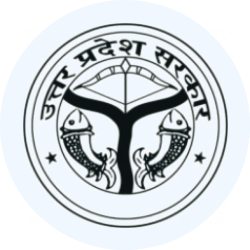Every effort has been made to denigrate The institution of Judiciary in India - Essay, UPSC MAIN | Course for UPPSC Preparation - UPPSC (UP) PDF Download
Every effort has been made to den-igrate The institu- tion of Judiciary in India
structure
(1) Opening — The Constitution recognises an independent and strong judiciary but political parties while in power refused to recognise this role.
(2) Body — Misuse of anticipatory bail.
— Ms. Phoolan Devi, MP, failed to appear before the court.
— The act of Chandraswami and Bal Thackeray.
— Lessons from Indira Gandhi.
— Shiv Sainik's activities infront of the court of Additional Chief metropolit-an Magistrate.
— People's court is higher than the law—propounded by Mr. Kalpanath Rai and Mr. Laloo Yadav.
— Withdrawal of cases by the government.
— Ready justice dispensed by criminals.
— Talk asserting the supremacy of Parliament vis-a-vis judiciary.
— The arrogance and insensitivity of the executive.
(3) Closing — “Who rules the country, the executive or the judiciary”—It is the rule of law which governs the country.
The Constitution clearly recognises an independent and strong judiciary as one of the main pillars of democracy. But political parties, while in power or not have, over the years, refused to recognise this role. Every effort has been made to denigrate the institution of judiciary, to rundown the higher judiciary and to reduce the public esteem for it. An instance had been the outburst of the Shiv Sena chief, Mr. Bal Thackeray against the judiciary for which he has been held guilty of contempt of court by the Nagpur Bench of the Bombay High Court and in which the appeal filed by him is pending in the Supreme Court. This tendency has gained momentum and a new urgency after the activist ruffle of the judiciary in important cases pertaining to hawala, the Ayodhya, St. Kitts and others.
A proof of this mindset is to be found in the disinclination of the leaders of political parties to appear in person before courts. It is considered infra-dig. As a result, no other provision of law has been as much misused as the one pertaining to anticipatory bail.
It is not, therefore, surprising that Ms. Phoolan Devi, ex-MP, failed to appear before the court in spite of repeated warrants. The Samajwadi Party to which she belongs has not considered it worthwhile to denounce this conduct. The conduct of the godman Chandraswami falls in the same category. Baba Ram Rahim's surrender process in the court as he liked and the riots by his supporters is well known and most recently impeachment proceeding against Supreme Court Judge. The outstanding example has been the repeated non-appearance of Mr. Thackeray before the Additional Chief Metropolitan Magistrate in Mumbai under one pretext or the other. Finally, when he did appear in the court, his advocate made a statement that Mr. Thackeray had appeared as desired by the court. This was promptly and rightly corrected by the Judge who said that “not as desired but as directed by the court.”
The worst manifestation of this open defiance is the practice resorted to by politicians to collect their followers in front of courts and to encourage the shouting of slogans deprecating judges and the judicial system. The lessons in this fine art were given to the whole nation by Indira Gandhi prior to and after the Emergency. This “glorious” tradition is being carried forward by the leaders of not only her political party but also others. This was in evidence yet again in Mumbai the other day when, according to news reports, the Shiv Sainiks shouted slogans for two hours in front of the court of the Additional Chief Metropolitan Magistrate denouncing the judge in the foulest language and in effect throwing a challenge, “Jo hamse takrayega, mittime mil jayega” (one who opposes us will be reduced to dust). It is not surprising that the judge had not taken kindly to this threatening posture and had asked the State Government to close down the courts if it wanted to make a mockery of the system of justice. Significantly, the Deputy Chief Minister and Home Minister of Maharashtra, in reply to newspersons' questions, had declined to provide any special security to the Magistrate.
There is also an increasing tendency to show that the “people's court” is higher than the court of law. This preposterous thesis has been propounded by so many politicians of different political parties.
Yet another manifestation of the disregard for the judicial process is the indiscriminate and patently partisan reasons for which cases are withdrawn by governments. In fact, a stage has come when one should ask, “Why enact laws if they are not to be enforced”. The Maharashtra and many state Governments have withdrawn a number of cases against under Sections 153A and 153B of the Cr.P.C. without assigning reasons. It also wanted to withdraw the case pertaining to the attack on a rival newspaper Mahanagar, but, fortunately, the court refused to oblige. The Governments some imes decides to request the courts to allow it to withdraw over 1,100 cases filed under the Scheduled Castes and the Scheduled Tribes (Prevention of Atrocities) Act. 1990.
The process of undermining judicial pronouncements has been carried a step further by disregarding the directions of the Bombay High Court in a public interest litigation case, permitting the use of loudspeakers only up to 11 p.m. during Navaratri. The Government clearly flouted the orders and permitted their use into the early hours. In a number of cases, court orders were wrongly interpreted to the chagrin of the affected parties, forcing them to go the High Court or the Supreme Court for contempt proceedings.
Not surprisingly, the system of ready justice dispensed by criminals and anti-social elements with the connivance of political parties is finding increasing acceptance in society. Political parties are not prepared to take up the cudgels against the trend. Rather, they denigrate the judiciary.
It is not therefore, surprising that the leaders of political parties at the national level are talking of reasserting the supremacy of Parliament vis-a-vis the judiciary and of amending the Prevention of Corruption Act to exclude the elected representatives from its purview and so on. There is also a move to amend the provisions of the Constitution to bring the judiciary under the undisputed hold of the executive in the matter of appointment and transfers of judges of the higher judiciary. The latest in this series of the proposed onslaughts is the move to curtail the scope of Public Interest Litigation by making it obligatory for the applicant to pay a deposit and to confine the eligibility of the applicants to those who are below the poverty line and so on.
The arrogance and insensitivity of the executive at the State and Central levels were decisively brought home recently once again by its actions of invoking the provisions of the Official Secrets Act. In a PIL case in the Bombay High Court pertaining to the reported death of over 1.000 children during four years in the tribal area of Melghat in Amravati district, the then Maharashtra Government took the unbelievable stand that the two reports of inquiry made by Secretarieas to the Government could not be made available as they were secret. Fortunately, the court did not uphold this plea and directed that they be made available to the parties to the litigation immediately. The other PIL on an equally vital public issue—the safety standards in nuclear establishments—asked whether precautions were being taken conforming to international standards and whether the regulatory and overseeing institutional arrangements were adequate. Again, a plea of the matter being secret was taken in the court by the Government of India. Unfortu
nately, the court accepted the plea and dismissed the PIL.
This inevitably raises the question of the direction in which the Indian democracy is heading. Sooner than later, the question which is always asked “Who rules this country, the executive or the judiciary,” will have to be answered in no uncertain terms. It is the rule of law which governs the country. The executive or the judiciary or Parliament are mere instrumentalities. It is a travesty of truth to say that during the 70th anniversary of our Independence, answers to such basic questions are still unclear to the ruling political elite.
|
113 videos|360 docs|105 tests
|
FAQs on Every effort has been made to denigrate The institution of Judiciary in India - Essay, UPSC MAIN - Course for UPPSC Preparation - UPPSC (UP)
| 1. What is the institution of Judiciary in India? |  |
| 2. What efforts have been made to denigrate the institution of Judiciary in India? |  |
| 3. How has the institution of Judiciary in India been affected by these efforts? |  |
| 4. What are the consequences of denigrating the institution of Judiciary in India? |  |
| 5. How can the institution of Judiciary in India overcome the challenges of denigration? |  |































